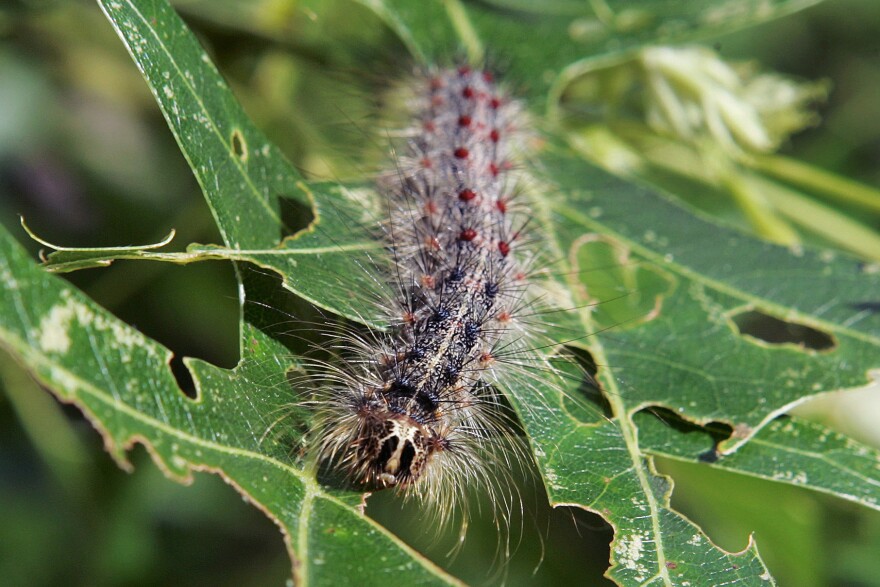The largest organization of insect experts in the world is dropping its common names for two insects — the gypsy moth and gypsy ant — because it says the names are inappropriate and offensive.
The Entomological Society of America said it would take input on new names for the moth Lymantria dispar and the ant Aphaenogaster araneoides.
Many scientific groups follow its lead in referring to insect species.
"Words matter, and what we call something matters. And by using the former name for Lymantria dispar, it really was very hurtful to the Romani people," says Chris Stelzig, the executive director of the organization.
The Romani people, or Roma, are Europe's largest ethnic minority and face discrimination. "Gypsy" is considered a pejorative term.
The ESA keeps a database of more than 2,000 common names for insects, along with their scientific names. They're constantly changing it, Stelzig says, but usually for scientific reasons. Often it's because "a new name is more descriptive of how they are actually in nature these days."
A request came in 2020 to change the name, and the ESA governing board made the final decision to remove the names in June. The group announced the change on Wednesday.
ESA archives show the term "Gypsy-moth" being used since at least 1908, if not earlier, according to records shared with NPR. And the ESA governing board approved the term "gypsy ant" in 2006.

Lymantria dispar, the more well-known of the two insects, is an invasive species in North America that scientists call a serious pest to the continent's forests. It first came to the U.S. from Europe in 1869, according to the U.S. Department of Agriculture.
Now L. dispar can be found throughout the entire Northeast U.S. along with parts of the Midwest and a few states in the South. When they are in the caterpillar stage of their lives, they feed on more than 300 species of trees and shrubs. They defoliate trees, leaving the trees "vulnerable to diseases and other pests and can eventually kill the tree," the USDA says.
The ESA says parts of the northeast U.S. and eastern Canada are now having the biggest outbreaks of L. dispar in decades.
As for the ants, Aphaenogaster araneoides, biology professor Terry McGlynn of California State University Dominguez Hills claimed credit for popularizing the common name "gypsy ants" starting around the year 2000.
He wrote in a 2019 blog post that each colony of the ants has multiple nests but only occupies a single nest at a time. "They are itinerant critters that move from one place to another, with a number of specific places they will stay temporarily, but never occupy a single one permanently." He said a colleague suggested "gypsy ants" and he went along with it, suggesting it to the ESA.
He regretted the decision, writing in 2019: "it's been clear for more than a short while that I made a bad decision to describe the ants using an ethnic slur, and I need to fix it." On Twitter Wednesday, McGlynn called the renaming "great news."
Going forward, the organization says it will put together a volunteer group to propose a new name for the moth L. dispar and then get comment from members before going to a committee and the governing board. Stelzig thinks the insects could have new common names by the end of the year.
The name change is part of the organization's new initiative to take suggestions on common names that should be changed, to "help ensure that insect common names are respectful, inclusive, and descriptive of the insect," the ESA says.
Copyright 2021 NPR. To see more, visit https://www.npr.org.


